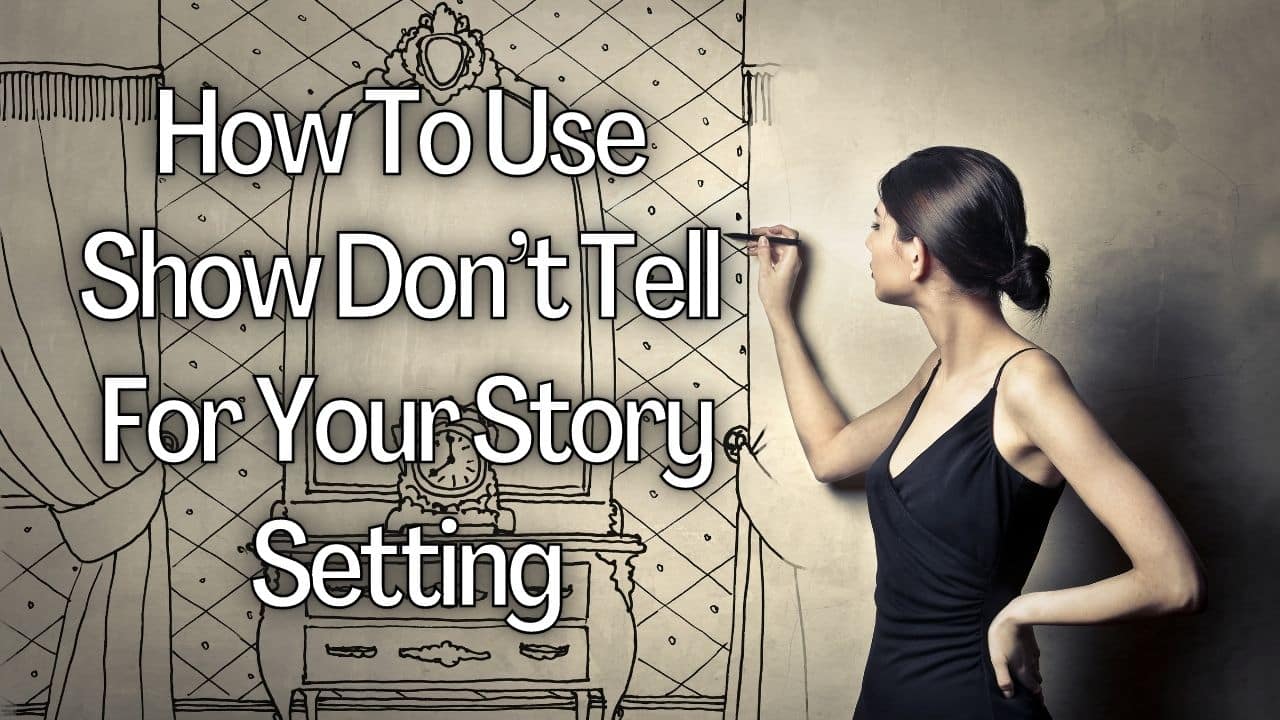As an Amazon Associate I earn from qualifying purchases.
On The Table Read, “The Best Book Reader Magazine in the UK“, JJ Barnes wrote about the use of show don’t tell in story, and how to use it to create the setting of your story.
Written by JJ Barnes
Show don’t tell is a popular piece of advice given to writers, but it isn’t always explained well. Previously I wrote about how to use this advice for demonstrating your characters emotions and feelings to your audience. For this piece, I’ll be explaining how to use show don’t tell to set the scene for your story.

Why Set The Scene
If you’re writing a play or a film script, the stage your story is set on is created by set designers and location scouts. The writer just has to focus on the characters words and actions. However, if in a book, this is your job.

If you don’t give your audience a scene to experience your story in, it’s like it is taking place in a plain white box. It’s boring and flat, and feels unreal. Your readers know it’s not in a box, it’s somewhere, they just don’t know where.
Without the scene being designed for them, they will either stop reading your story to try and figure it out, or just feel disconnected because white boxes aren’t real. Therefore, your job is to let your audience know where the scene is happening. Give them enough details about it that they can watch it play out clearly in their minds.
Why Use Show Don’t Tell
Whilst telling your audience where your scene is set is important, it’s also important that it feels real. Your audience needs to be immersed in the setting.
If you describe a room as a list it feels dry and dull:
“The room had blue walls, green carpet and three windows. The room had seven chairs place around two tables with cards and candles on top. Five people were standing in the room. She entered and walked towards them.”

This tells you what you need to know. You can visualise the room. When the characters enter it and starts interacting with the other people in the room, you can watch them move around that space. However, you’re outside it. You’re looking in and watching it happen. For the story to real pull you in, you have to feel emotions about that room and how the look of it impacts you. Show don’t tell is how you make it real.

How To Write With Show Don’t Tell
The character who’s point of view (POV) you’re in, be it the protagonist or otherwise, is how your audience experiences the room. If it impacts them, it impacts the audience.
This time show it the room, the setting, by how the character entering it feels. Describe it by how they move through the room, how it feels to them physically or impacts them emotionally. Show it to your audience by the way your character responds to the room around her.
“She pushed open the door and the faces of five strangers turned to stare at her. She gulped and forced herself forwards, keeping her eyes level and her back straight. As she walked towards them, she saw the two tables laid out with cards and candles, chairs arranged around them strategically. She didn’t know if she’d be expected to sit or where, but they were too close together for comfort. And one more seat than people… was someone else to join them? And who?
The jewel green carpet beneath her feet was thick and lush; whichever of her observers owned this place was clearly wealthy. As she reached them, she heard the door behind her lock. Her heart started to race. She glanced around sharply, the three windows all had bolts and bars. She was trapped.”
You do not need your audience to know exactly how your setting looks prior to your character entering it. Describe the room and the people based on your characters emotional response and how they impact her. Your scene will feel more real if you describe things as she encounters them.

Grounding In A Character
If your audience feels connected to your POV character, they’ll feel connected to the scene you’re setting. If they feel connected to your scene, they’ll feel connected to your story. By drawing your audience in and making the story feel real and personal, you’ll be able to hold their attention. They’ll be emotionally invested in the outcome.
Grounding your audience in the experiences and emotions of the POV character is how you achieve that emotional connection. If anything in that setting is relevant, describe it based on how that character feels. If your character doesn’t notice it or isn’t interested in it, then the chances are your audience doesn’t need to know about it either. The colour of the walls isn’t relevant to your audience if it’s not relevant to the character.
Your character is your audiences access point to all things in your story. Make your character as human and real as possible, so your audience feels like they’re riding with them, rather than outside looking in. That way your story will come alive.
More From JJ Barnes:
I am an author, filmmaker, artist and youtuber, and I am the creator and editor of The Table Read.
You can find links to all my work and social media on my website: www.jjbarnes.co.uk
Buy my books: www.sirenstories.co.uk/books
Follow me on Twitter: @JudieannRose
We strive to keep The Table Read free for both our readers and our contributors. If you have enjoyed our work, please consider donating to help keep The Table Read going!
Amazon and the Amazon logo are trademarks of Amazon.com, Inc, or its affiliates.


